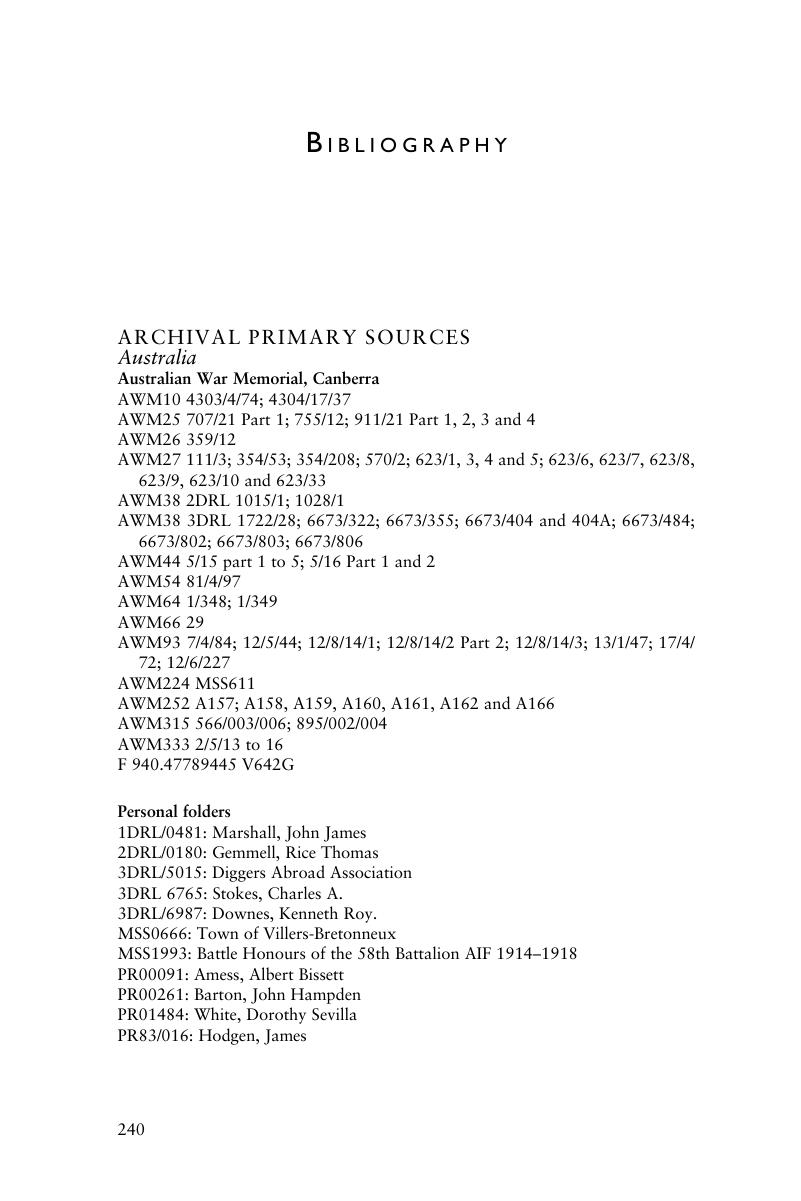Book contents
- Our Corner of the Somme
- Other titles in the Australian Army History Series
- Our Corner of the Somme
- Copyright page
- Epigraph
- Foreword
- Contents
- Maps
- Photographs
- Figures and tables
- Preface
- Acknowledgements
- Glossary
- Introduction
- Chapter 1 Villers-Bretonneux
- Chapter 2 ‘The turning point of the war’
- Chapter 3 A school or nothing
- Chapter 4 The Australian National Memorial at Villers-Bretonneux
- Chapter 5 ‘Have we forgotten this place?’
- Chapter 6 ‘The meaning of the Anzac tradition must be learned anew’
- Chapter 7 ‘A piece of Australia in France’
- Chapter 8 ‘It was great to see Australia acknowledged in such a great way’
- Conclusion
- Appendix
- Notes
- Bibliography
- Index
- References
Bibliography
Published online by Cambridge University Press: 16 April 2019
- Our Corner of the Somme
- Other titles in the Australian Army History Series
- Our Corner of the Somme
- Copyright page
- Epigraph
- Foreword
- Contents
- Maps
- Photographs
- Figures and tables
- Preface
- Acknowledgements
- Glossary
- Introduction
- Chapter 1 Villers-Bretonneux
- Chapter 2 ‘The turning point of the war’
- Chapter 3 A school or nothing
- Chapter 4 The Australian National Memorial at Villers-Bretonneux
- Chapter 5 ‘Have we forgotten this place?’
- Chapter 6 ‘The meaning of the Anzac tradition must be learned anew’
- Chapter 7 ‘A piece of Australia in France’
- Chapter 8 ‘It was great to see Australia acknowledged in such a great way’
- Conclusion
- Appendix
- Notes
- Bibliography
- Index
- References
Summary

- Type
- Chapter
- Information
- Our Corner of the SommeAustralia at Villers-Bretonneux, pp. 240 - 261Publisher: Cambridge University PressPrint publication year: 2019

